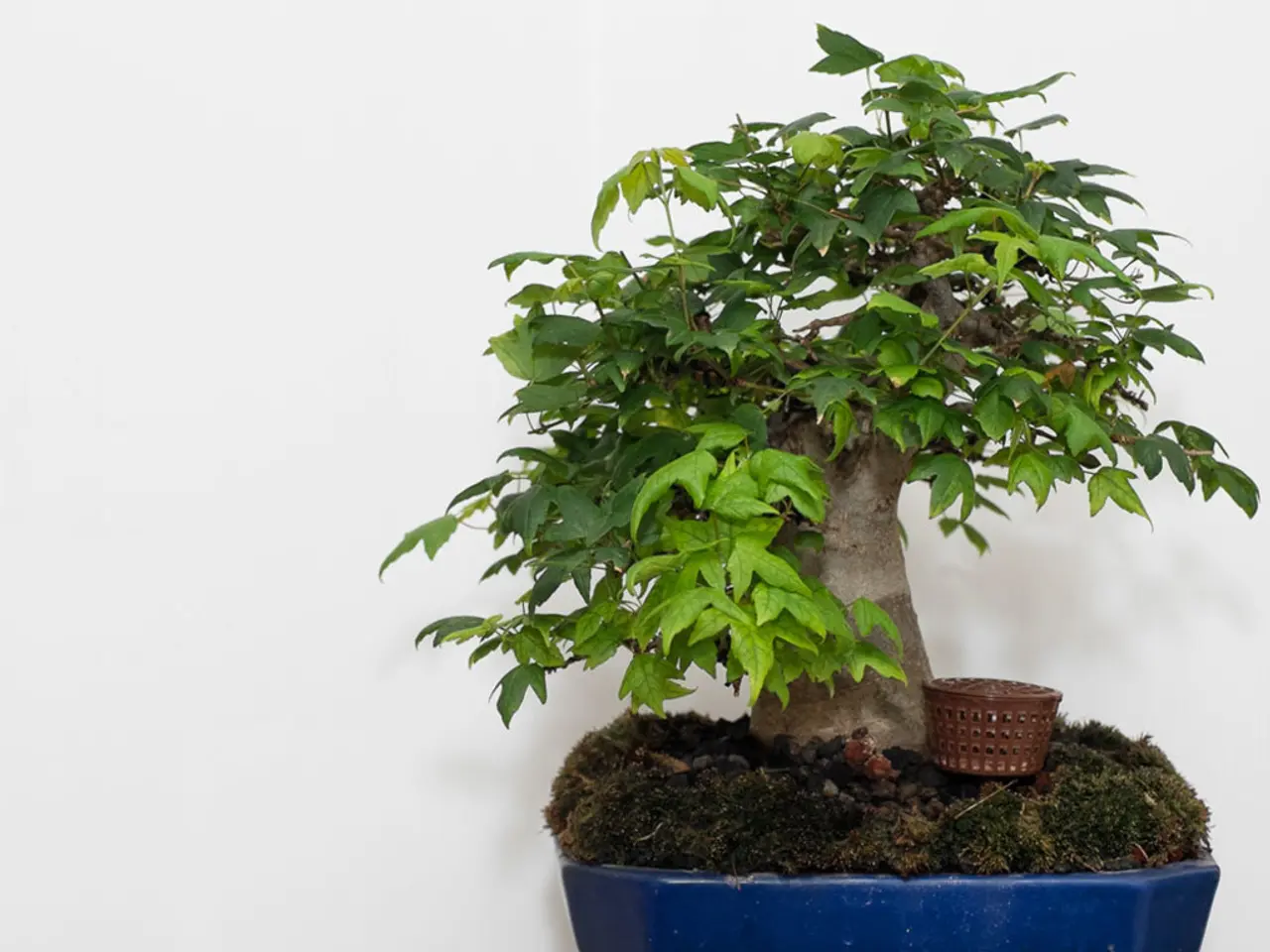Bonsai Grafting Techniques: Achieving Unique, Customized Bonsai Designs
In the captivating world of bonsai, grafting plays a pivotal role in creating unique aesthetic appeals and enhancing the growth and health of these miniature trees. Here's a step-by-step guide to performing approach grafting, a precise and effective technique that can transform your bonsai.
Step 1: Select Compatible Plants
Choose a healthy rootstock and scion that are compatible, often from the same species or closely related ones, to ensure a successful grafting process [1][3].
Step 2: Choose Grafting Points
Identify the spots on both the rootstock and the scion where the graft will be done. Typically, a section on the trunk or a major branch of the rootstock is selected [1][3].
Step 3: Prepare the Graft Surfaces
Make matching cuts or slits on both the rootstock and the scion branch, exposing the cambium layer—the green living tissue beneath the bark responsible for growth [1].
Step 4: Join the Two Parts
Align the cut surfaces of the scion and rootstock carefully so the cambium layers touch as much as possible. This contact is critical for the tissues to grow together and form a sturdy graft union [1][3].
Step 5: Secure the Graft
Wrap the graft area tightly with grafting tape or raffia to hold the pieces together, preventing movement and moisture loss. The wrapping also protects against infection and drying out while the graft heals [1][3].
Step 6: Seal the Graft
Apply grafting wax or sealant over the wrapped area to prevent desiccation and infection. This step also helps to keep the connection moist and facilitates tissue growth [1].
Step 7: Care After Grafting
Place the grafted bonsai in a humid, shaded environment to promote healing. Water and monitor the graft for signs of success or failure. Growth will eventually indicate a successful graft, while failure might be indicated by die-back around the graft union [1][3].
Step 8: Aftercare
Once the graft has taken and the scion starts growing independently, remove wraps carefully to avoid damaging the new growth. Prune and shape the bonsai as required over time to integrate the grafted branch aesthetically into the tree's design [1].
Approach grafting is particularly useful for correcting branch placement, adding new branches, or fixing structural flaws without removing large parts of the tree. This technique was demonstrated in a recent tutorial specifically for Japanese maple bonsai but applies broadly across bonsai species [1][3].
Factors to Consider
- When selecting rootstock and scion for bonsai grafting, genetic similarity, growth patterns, climate tolerance, and disease resistance are important factors to consider for a successful union [2].
- Lack of callus formation, poor scion growth, or visible cracks between the grafted area can indicate a failed graft [2].
- The recovery period for a grafted bonsai can vary substantially, typically ranging from several weeks to several months [2].
- Grafting can introduce unusual bark characteristics, such as the striking white bark of the Birch tree or the rugged, gnarled texture of the Olive tree [2].
- Grafting different species within the same genus is possible, but compatibility and careful technique are still vital [2].
- Ideal temperature, humidity, and light conditions during the grafting process facilitate healthy callus formation and graft union [2].
- Winter and early spring, when trees are dormant, can be ideal for grafting [2].
[1] Bonsai Empire (2021). Approach Grafting: The Complete Guide. [Online] Available at: https://www.bonsaiempire.com/blog/approach-grafting-complete-guide/
[2] The Bonsai Garden (2021). Bonsai Grafting Basics. [Online] Available at: https://www.thebonsaigarden.com/bonsai-grafting-basics/
This article was generated based on the provided bullet points, maintaining factual accuracy and a straightforward, approachable style.
Inventive home-and-garden enthusiasts may find success in applying approach grafting techniques to their bonsai, enhancing their lifestyle by creating unique and visually appealing miniature trees. For instance, grafting can help mend structural flaws or add new branches to existing bonsai, expanding the variety and versatility of one's home-and-garden gardening projects.




